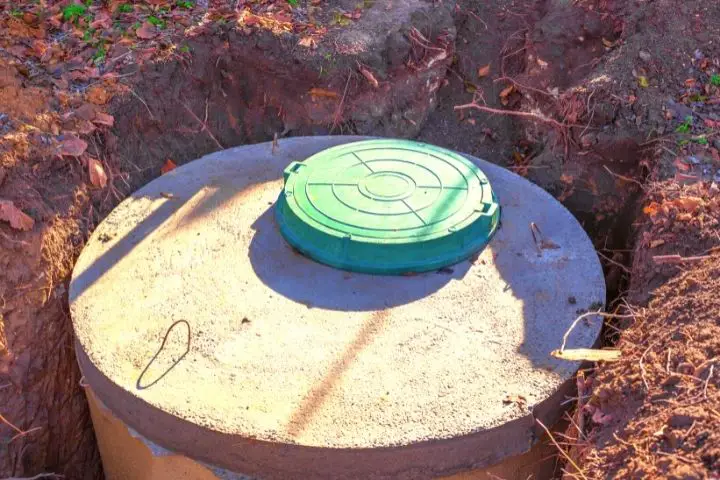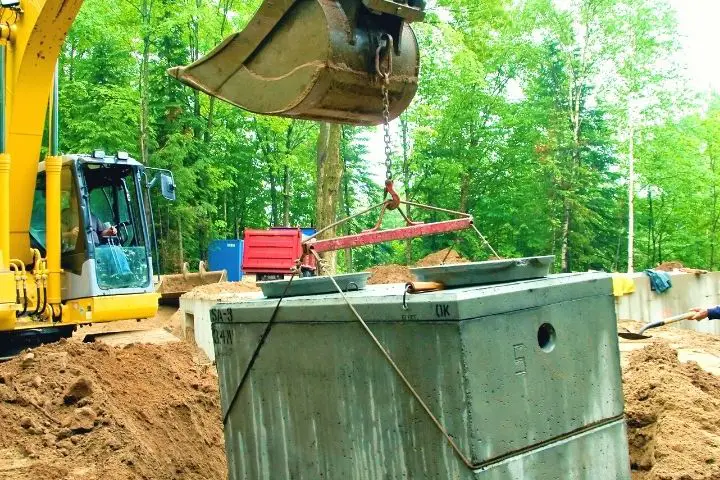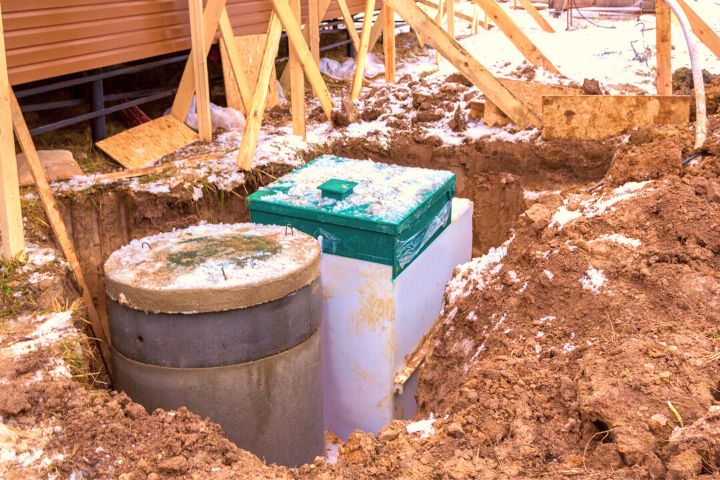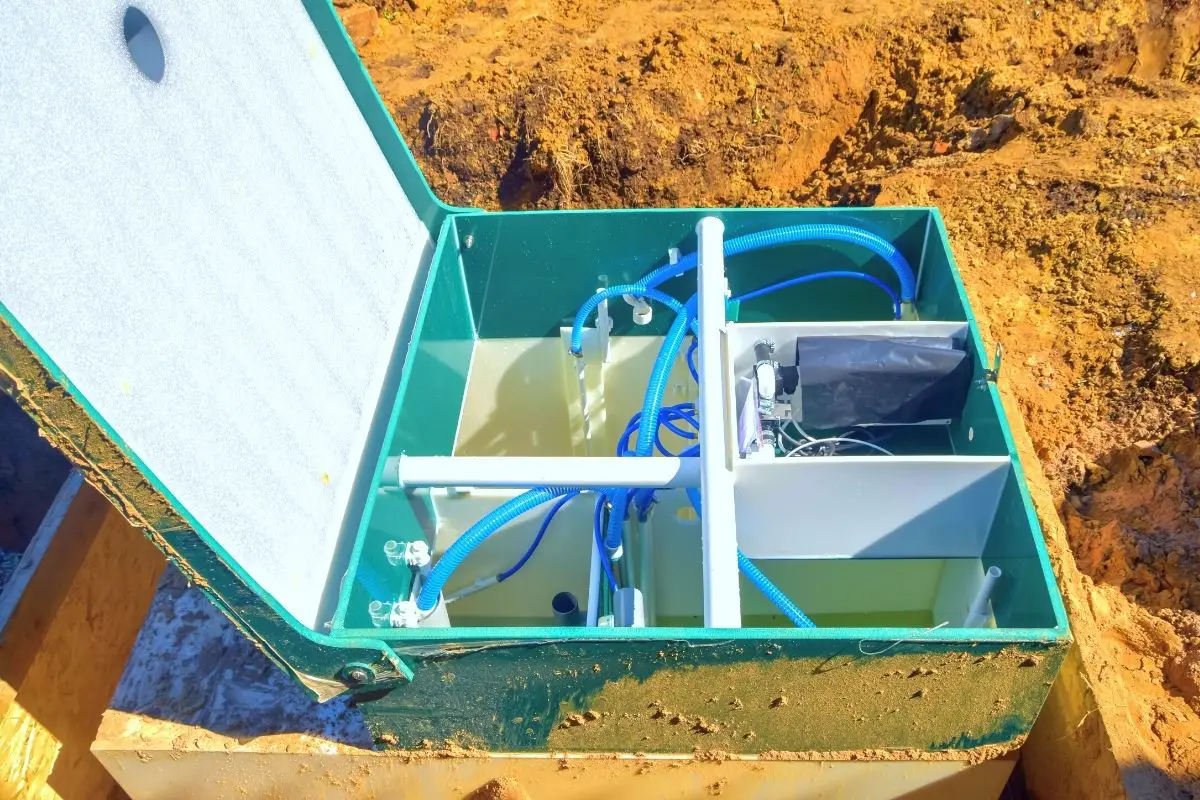How Does a Septic Tank Work? (+ 5 Types of Septic Systems to Consider!)
If you’re planning to move to a remote area or a place without a centralized sewage system, chances are that you will have to install a septic tank to handle your drainage waste.
So, how do septic tanks work?
To briefly put it, a septic tank primarily collects all drainage waste from your house into a buried tank outside that either contains a single or multiple chambers. This tank separates the waste into sludge and liquid wastewater that flows into a drainfield where it’s finally treated and released into the soil below.
But still, how do you know which septic system is the best solution for you?
Dive in and find out!
What Makes Up a Septic System?
For a septic unit to efficiently work, there are 3 basic components that it must have.
These are:
- An effective sewer pipe network
- A septic tank
- Drain field
Other modernized septic units also include technology like sewer sensors that give you a real-time analysis of your septic system.
When inspecting your septic tank, these sensors can give you accurate information on the tank’s current waste capacity or how to find your septic tank when you want to carry out maintenance.
How Do Septic Tanks Work?

A septic tank is an ingenious waste disposal system that’s pretty straightforward in its function once installed in your home.
Now, there are a bunch of septic units that you can pick from (as I’ll shortly highlight below) but they all follow these 4 basic steps to accomplish their intended purpose:
1. Wastewater Leaves Your House
Your house has a well-connected network of drainage pipes that collect all the waste from your kitchen sinks, toilets, tubs, and garbage disposal unit.
All of these wastes are separately moved around the house until they reach the main drainage pipe. This main pipe collects all the waste from several other smaller drainage pipes in your house and channels them out into a septic tank.
If you are wondering what the main drainage pipe looks like…
It will be a pipe, mostly located in your basement or crawlspace, that looks bigger than all the other drain pipes in your house. Normally, it has a 4-inch diameter, at least, and leads out of the house through a wall into the space outside.
2. Waste Collection in the Septic Tank
When waste from your drainage leaves the main house, it enters and collects in a septic storage tank outside.
A septic tank can be either made from concrete, polyethylene, or fibreglass and is usually buried below the surface.
These tanks are always water-tight to prevent leakages and malfunctioning of the septic system down the line. Also, regularly adding good bacteria into your septic tank will promote optimal solid waste digestion into a more treatable liquid waste.
Once wastewater from the main house fills inside, it will carry all that mixture for a while to allow the waste to separate into more-disposal states.
For instance…

The solid part of the waste will settle at the bottom of the tank as it’s heavier and much denser. These end up forming something also known as the sludge layer at the base.
The liquid part of the waste, also known as effluent, will be suspended just above the sludge as it gets pushed up by the descending solids.
Finally, the grease and oily parts of the waste will float at the top inside the septic due to its lower density. This top layer of the septic is also referred to as the scum and can be easily seen when you lift the septic’s cover.
You should regularly check to see if your septic is full. Signs that your septic tank is full include a foul odor and constant backups out of your house’s various drains.
So, you’d better watch out.
3. Releasing Effluent to the Drainfield
As the level of effluent in the tank rises, it leaves the septic tank through a T-shaped outlet and flows into the drainfield.
The T-shape on this outlet is very important as it prevents the scum and sludge from leaving the tank. It dips directly into the middle layer where most of the liquid waste is likely to linger.
For this process, some systems may take advantage of the force of gravity while others may rely on pumps to channel the effluent into the drainfield for purification.

4. Purification in the Drainfield
This is where the rest of the party goes down.
After the effluent leaves the septic tank, it’s moved through a network of perforated pipes into a shallowly dug basin in the soil. This basin is mainly dug at the lower end of the slope to prevent the contamination of domestic water sources like wells.
Here, the water is passed through a simple filtration structure that comprises a sandy layer that traps any solid waste that may have escaped from the septic tank.
It also has a layer of gravel at the bottom that adds oxygen to the wastewater. This oxygen is important as it promotes the thriving of anaerobic bacteria that helps to digest septic waste.
As the treated water finally gets released into the soil, the harmful pathogens are again further neutralized by some beneficial bacteria found below.
All this results in clean water that seeps down into the underground water reservoirs.
And that’s about it!
Feel free to watch this video for clearer visualization.
5 Types of Septic Units
As I had earlier mentioned, there are several types of septic systems that you may have installed for your home. All this depends on:
- The size of your house
- Your location
- Available space
- Type of soil
- Nature of slope
- Nearness to sensitive water reservoirs
- Area’s climate
To some extent, local laws may also affect the type of septic system that you might have in your home.
That said, the following are some of the other septic systems that you can have installed for you.
1. Conventional Septic Systems
This type of septic system is very popular for single, family homes or small businesses.
Its design includes a drainfield that is primarily made of gravel and stone drenches.
Here, the outlet pipe from the main tank is mainly covered with stone/gravel to prevent dirt, sand, and other contaminants from entering the clean stone.
2. Chamber Septic Systems
The chamber septic system has been widely used to replace the gravel/stone drench systems. They are a perfect fit for areas with raised groundwater tables.
Their design includes several connected chambers covered with soil all around it. The chambers may be a fabric-wrapped pipe or open-bottomed and are majorly made from recycled materials that greatly reduce your carbon footprint.
As the water from the main tank passes through the chambered pipes, the effluent gets exposed to the billions of microbes found in the soil, making the wastewater treatment more effective.

3. Recirculating Sand Filter Units
These types of septic systems require that you install an additional pumping tank. This pumping tank collects water from the primary septic tank and pumps it to a special sand filter system before releasing it to the drainfield.
The sand filter, in this case, is normally lined with concrete or PVC and is filled with sand at the top and a thinner layer of stone at the bottom.
From the pumping tank, wastewater is pushed through a perforated pipe that’s installed at the top of the sand filter under low pressure.
The effluent moves down through the sand grains – filtering and getting treated in the process – before it’s released to the drainfield for further treatment.
While this unit offers a more effective wastewater treatment solution, it also comes with additional costs during installation and maintenance.
4. Drip Distributions Systems
The drip septic system, as the name suggests, uses slow and timed wastewater releases into the soil as its main treatment mechanism.
It differs from the rest in its installation as it only requires to be set about 6-12 inches below the surface.
Also, as the “drip” is timed, you’ll have to install an extra dose tank that controls the holding and release of effluent into the endlessly winding pipe network.
You will also have to shoulder the burden of electricity costs and additional maintenance of the dose tank and pipes should a clog occur.
5. Aerobic Treatment Units (ATUs)

An ATU mostly depends on oxygen to achieve efficiency.
This type of septic system comes with an air pump that’s installed on top of the tank. This pump has multiple air inlet pipes that dive and add oxygen directly into different chambers of the septic.
This extra oxygen improves the condition for the good bacteria and makes the breaking down of solid waste very rapid in the septic tank.
ATUs are mainly suitable for homes that have smaller lots, are in areas with very high water tables, have poor soil conditions, or are located near sensitive water bodies.
Frequently Asked Questions
1. Is a septic tank hard to maintain?
A septic tank is usually not hard to maintain.
To get the best performance from your unit, you must ensure that you get the best professionals in the market to make the installation for you in the first place! That way, you have a good chance of avoiding premature septic breakdowns that may cost a ton of money to fix.
Other than that, regularly adding good bacteria into the tank and not dumping non-digestible solid waste in your drains will keep your septic healthy for the long haul.
You should also limit the amount of water flushed down into the tank as this can imbalance the conditions for the bacteria and also cause the tank to fill up faster than it’s ideal.
2. How often should a septic tank be emptied?

Most septic system companies recommend that you should empty your septic tanks once every 3 or 5 years.
Nonetheless, all this can be greatly affected depending on several factors.
These include the overall size of your septic tank, the amount of water you flush down the drains, and the volume of sludge in the tank.
How, good or bad you manage these factors will determine how frequently or rarely you’ll have to pump out your septic.






